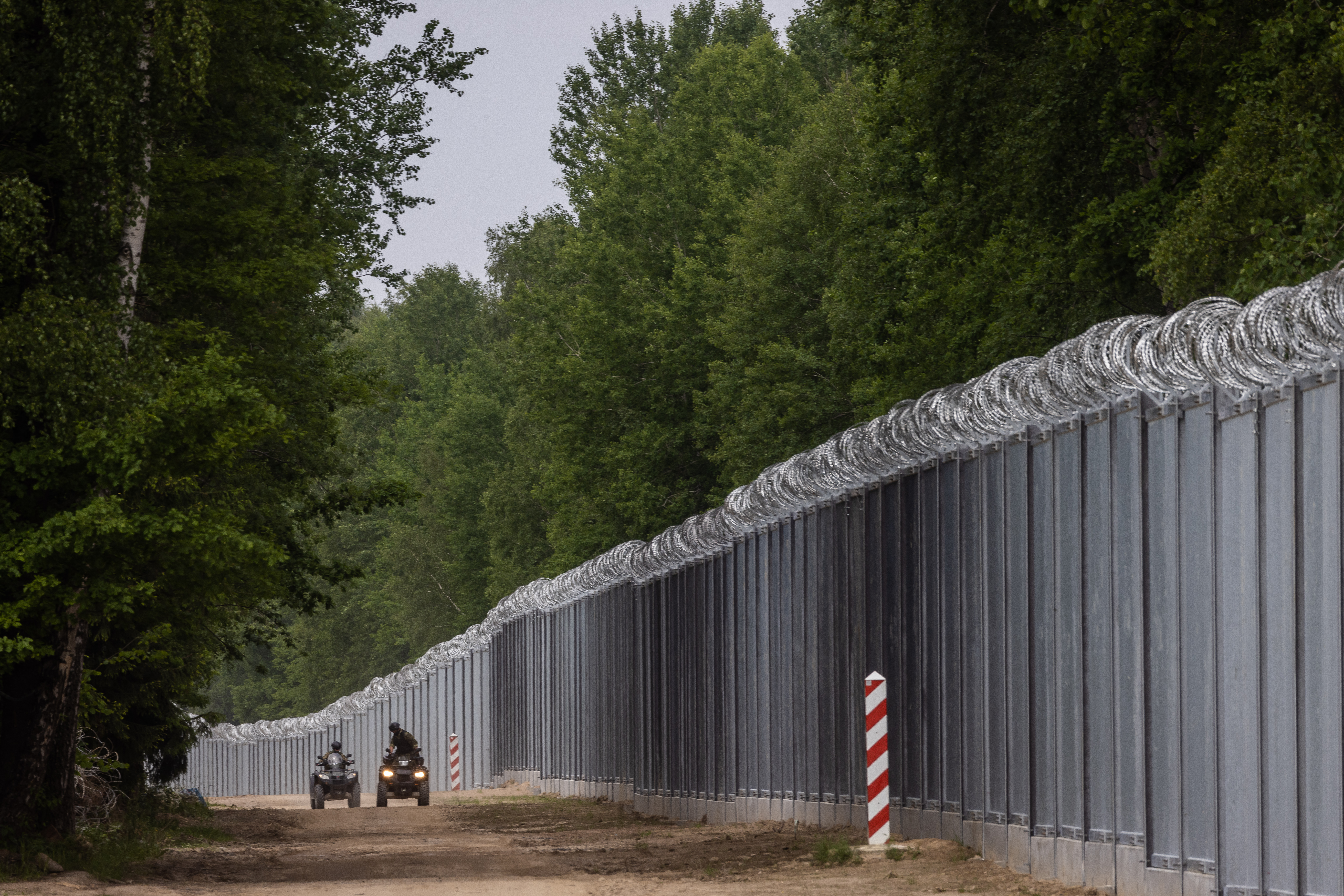
Border guards patrol on quads along the border wall at the Polish-Belarusian border near Tolcze village, in Sokolka County, Podlaskie Voivodeship, in north-eastern Poland on June 8, 2022. FILE PHOTO/Agence France-Presse
WARSAW — Poland on Monday announced plans to redeploy a no-entry buffer zone on its border with Belarus later this week, in a bid to deter illegal migrants from entering the country.
In May, Warsaw and the West blamed Belarus and its ally Russia for orchestrating the influx of African migrants, as part of a “hybrid” attack designed to destabilize the region and the EU.
The aim is “to make it more difficult for illegal migrants to cross the Polish-Belarussian border and to create better operating conditions for the border guards, army and police” deployed there, Prime Minister Donald Tusk told reporters.
READ: Poland plans to send up to 10,000 soldiers to border with Belarus
The buffer zone will be operational from Thursday.
Last week, a Polish soldier who was patrolling the border was fatally stabbed by a migrant.
Speaking on TVN24, Deputy Interior Minister Czeslaw Mroczek said the buffer zone will extend over two sections and more than 60 kilometers (37 miles) in areas where there are the highest number of illegal crossings.
“For around 45 kilometers, it will be an area of around 200 meters deep. On the part that crosses nature reserves, the great forest (Bialowieza), the zone will be a little deeper,” Mroczek added.
READ: Belarus begins military drills near its border with Poland and Lithuania as tensions heighten
In 2021, the previous nationalist government built a three kilometer deep buffer zone along the entire border that was closed to all non-residents, including humanitarian organizations and journalists.
Poland in 2022 erected a five-meter-high metal fence along 186 kilometers of its border with Belarus to deter migrants, equipping it with thousands of cameras and motion sensors.
Similar measures have been put in place along its border with Russia.
Tusk said in May that more than 90 percent of those who had crossed the Polish border illegally had Russian visas.
According to the Polish border guard agency, more than 17,000 attempts to cross the border from Belarus have been detected this year.